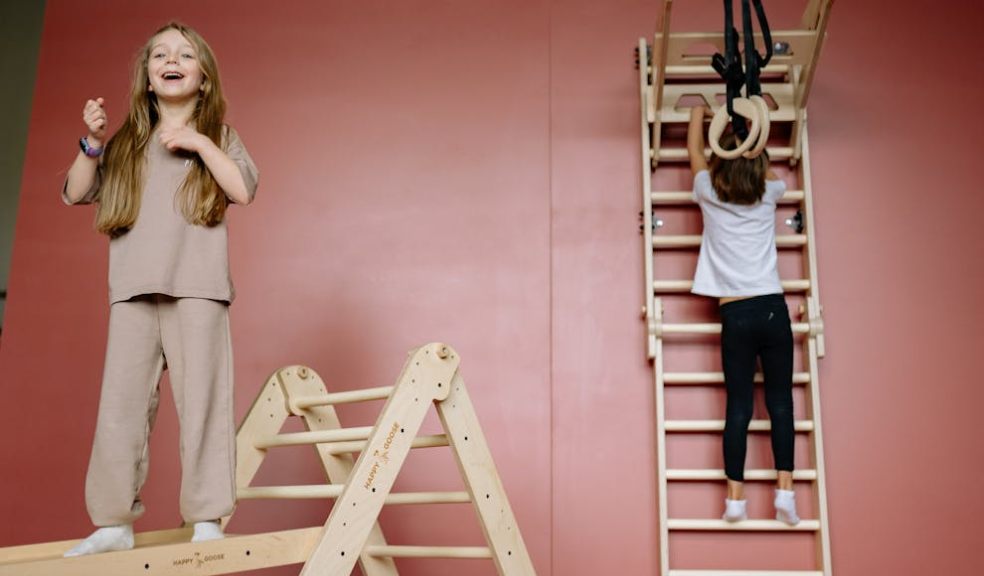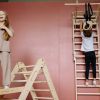
Enhancing Childcare Facilities With Indoor Play Equipment: What Exeter Educators Should Know
Introducing indoor play equipment into childcare facilities significantly enhances the environment for young learners. In Exeter, a region that prides itself on educational quality, providing children with engaging, safe, and stimulating indoor environments is crucial for their development. The strategic inclusion of play equipment caters to various learning styles, promoting active participation and fostering essential developmental skills in a controlled setting.
The Importance of Play in Early Development
The role of play in early development cannot be overstated. It offers children the essential hands-on experiences that are critical for honing their motor skills, boosting their creativity, and enhancing their social capabilities. By incorporating a variety of play equipment, educators can cover a broad spectrum of developmental areas, ensuring that children receive a well-rounded foundation in their formative years.
Equally, play helps to establish a foundation for lifelong learning by instilling curiosity and the enthusiasm to discover. The right play equipment can transform a simple indoor area into a rich educational environment where daily activities are turned into fun learning experiences. This setup helps children to build confidence and independence as they navigate through playful yet challenging tasks.
Choosing the Right Equipment
Selecting the right indoor play equipment is a delicate balance between fun and functionality. The equipment must not only fit physically in the space available but also match the developmental stages of the children using it. It's essential to choose items that stimulate, challenge, and grow with the children. Providers should look for versatile, durable play options that can withstand the rigours of daily use by energetic children.
It is critical that all play items adhere strictly to health and safety standards to ensure the well-being of the children. Providers should consider equipment that encourages inclusivity and accessibility, allowing children of all abilities to participate equally. The careful selection of these tools plays a significant role in creating an inviting and inclusive learning environment.
Safety First: Compliance and Considerations
Safety in childcare facilities is a non-negotiable priority, especially when introducing new elements like indoor play equipment. All equipment must meet the UK’s stringent safety guidelines and be regularly inspected for potential hazards. Adherence to these standards minimises risks and protects children from harm, providing peace of mind for both staff and parents.
Childcare providers should conduct frequent risk assessments and adjust their safety protocols accordingly. It’s vital to train staff on emergency procedures and daily safety checks to maintain a secure environment. Keeping detailed records of safety inspections and incident reports also helps in managing compliance and improving safety measures over time.
Maximising Space with Indoor Equipment
Effective utilisation of space is crucial when incorporating indoor play equipment. Childcare facilities, especially those in urban areas, may not have the luxury of extensive outdoor areas. Indoor play equipment must be thoughtfully arranged to maximise play opportunities while ensuring safety and free movement. Space planning involves considering the flow of movement, the variety of activities offered, and the ease with which children can access different play options.
Creative layout and design can significantly enhance the functionality of a limited space. Utilising multi-functional play systems that incorporate various activities within a compact structure can be particularly effective. These solutions not only save space but also provide more extensive options for play, catering to various interests and developmental needs simultaneously.
Incorporating Educational Play Equipment
Educational play equipment is vital for blending learning with fun. Integrating educational elements like puzzles, interactive boards, and themed play areas can captivate children's interest and stimulate their learning processes. These resources are designed to enhance literacy, numeracy, and problem-solving skills while children engage in play, seamlessly integrating education into their daily activities.
Childcare providers should choose educational play equipment that aligns with their curricular goals and complements their teaching methods. This strategic selection ensures that playtime extends into valuable learning opportunities, making education a continuous, enjoyable journey for children. Such an environment encourages children to explore educational concepts playfully and intuitively, which can enhance their engagement and retention of knowledge.
Climbing and Physical Play
Indoor climbing frames are exceptional for promoting physical development and encouraging risk-taking in a safe environment. When selecting early years climbing frames, it is crucial to opt for designs that are age-appropriate and provide the right level of challenge that young children can handle safely. These structures help in developing muscle strength, coordination, and balance, which are integral aspects of physical development.
The benefits of climbing frames extend beyond physical health; they also support social and emotional learning. As children navigate these frames, they learn about trust, teamwork, and perseverance. Climbing challenges provide a platform for children to overcome fears and build confidence through achievement, fostering resilience and a positive attitude towards challenges.
Community Involvement and Feedback
Engaging with the community can enhance the effectiveness of play equipment in childcare settings. Soliciting feedback from parents, children, and fellow educators can provide insights into the impact and appeal of the play areas. This feedback is invaluable for refining existing setups and making informed decisions about future additions or changes.
Community engagement also helps in building a supportive network around the childcare facility, fostering relationships that enhance the educational environment. Events and activities that involve family members and local residents can reinforce community ties and provide additional resources and support for the childcare provider.
Budget Considerations
While the benefits of indoor play equipment are clear, managing the costs is a practical concern that requires careful planning. Childcare providers need to budget not only for the purchase and installation of equipment but also for its maintenance and potential upgrades. It’s advisable to plan for long-term costs and consider financial strategies that could alleviate some of the burdens, such as leasing equipment or engaging in partnerships with local businesses.
Exploring different funding avenues like grants, sponsorships, or community fundraising can also be beneficial. These financial strategies can help providers afford high-quality play equipment without compromising on safety or educational value, ensuring that all children have access to the best possible learning environments.
Sustainable Practices in Play Equipment
Opting for play equipment made from sustainable materials reflects a commitment to environmental stewardship and provides a teaching opportunity about the importance of sustainability. Providers should seek out manufacturers who use eco-friendly materials and processes, thereby reducing the ecological footprint of their educational resources.
Sustainable play equipment often comes with added benefits such as non-toxic finishes and greater durability, which are essential for children’s safety and the longevity of the equipment. By choosing suppliers who prioritise sustainability, educators can ensure that their investments are sound and responsible, contributing to a healthier planet and a brighter future for all.
Evaluating Impact on Child Development
It is crucial to regularly assess the impact of indoor play equipment on child development. These evaluations help ensure that the resources are meeting their intended purposes and contributing positively to the children’s growth. Metrics such as engagement levels, skill development, and overall well-being can provide a comprehensive view of the equipment’s effectiveness.
Feedback from staff and observational studies can also inform adjustments and improvements, ensuring that the play equipment continues to meet the evolving needs of children and the educational goals of the facility. Regular assessment fosters a dynamic learning environment where resources are continuously adapted to maximise their developmental impact.
Conclusion
The introduction of indoor play equipment in childcare settings in Exeter represents a significant step towards enhancing educational outcomes and fostering holistic development among young learners. By carefully selecting appropriate, safe, and engaging equipment, educators can create enriching environments that encourage children to learn and grow in diverse and meaningful ways. With the right strategies and community involvement, these facilities can ensure that their indoor play areas provide lasting benefits, supporting the developmental journeys of the children they serve.














